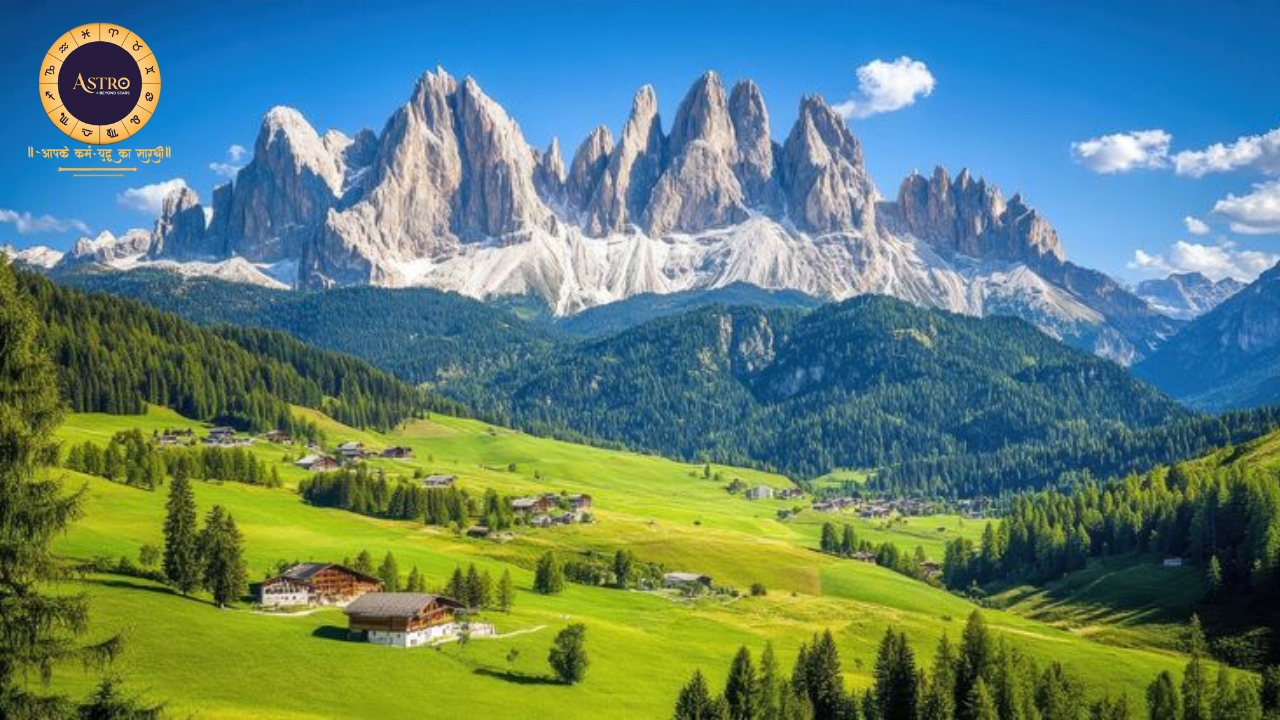As firm believers in Sanatan, we believe everything on this planet is a creation of the higher realm. Not only trees, plants, birds, animals, and humans but mountains and hills as well. As the most civilised and intelligent creatures on this planet, it is our responsibility to protect and preserve nature’s beauty for us and a better future.
By worshipping mountains and hills, we offer our respect towards their benevolence. We worship the mounts not only because we want to preserve them because they protect us or because we are in awe of them but because we respect them and see them as sacred creations of the divine. In return, they protect us, provide us with soil, plants, other vegetation, oxygen, wildlife, and help stabilise the ecosystem.
Mountains and hills symbolise nature’s majesty and tranquillity. They represent nature’s beauty and provide physical, emotional, and spiritual benefits.
Their towering peaks and gentle slopes inspire peace and serenity. However, they also offer challenges when climbing the peak, farming, growing plants and vegetation, etc. making us strong enough and inspiring us to face the challenges that life throws at us.
Whether cloaked in mist or bathed in sunlight, these landscapes remind us of life’s enduring rhythms and the profound connection between the earth and the spirit, inviting adventure and reflection.
Various mountains and hills are sacred because of their ancient history of origin, mythological and spiritual relevance, and the logic behind their presence, and their capability related to the higher realm.
This comprehensive blog post will explore some significant mountains and discuss why we worship them, their importance, and their logic.
Govardhan Parvat
Govardhan Parvat holds deep spiritual significance in Hinduism, particularly in the traditions of the Vaishnavite sect. It is believed that Lord Krishna lifted the parvat to protect the people of Vrindavan from a storm and incessant rains brought about by Lord Indra. This divine act symbolises Krishna’s role as a protector and provider.
Govardhan Parvat is a sacred place that reminds us of Lord Krishna’s love and protection. Krishna lifted the hill on his little finger for 7days to save the villagers from rain, showing us the power of selfless love. We worship and preserve Govardhan Parvat to honour Krishna’s kindness and keep our cultural heritage, nature, and spirituality alive. Not only that, but there is logic and reason as well; Govardhan Parvat is rich in biodiversity, with diverse flora and fauna that support local ecosystems. It symbolises the balance of nature and the importance of sustainable practices, as it represents natural sources of water and sustenance for surrounding villages.
Kailash Parvat
Kailash Parvat is not just a mountain. It is a sacred treasure respected deeply by millions of people worldwide. It embraces the divine connection between Lord Shiva and Goddess Parvati, embodying the eternal bond of love, strength, and spiritual enlightenment. This majestic peak reminds us of nature’s power, teaching us humility, peace, and the importance of spiritual growth. By preserving Kailash, we honour both our cultural heritage and the delicate Tibetan ecosystem.
Kailash Parvat is essential because it helps supply water to major rivers like the Indus and Brahmaputra, as its glaciers feed these rivers. The mountain’s unique shape helps scientists understand the Earth’s shifting plates. It also has a clean, natural environment that supports rare wildlife and plays a role in the local climate.
Himalayas
The Himalayas are the highest mountain in the world and vital for both the Earth and human life. They are the source of many major rivers, like the Ganges and Brahmaputra, providing water to millions for drinking, farming, and industry. The glaciers in the Himalayas act as natural water reservoirs, slowly releasing water throughout the year. These mountains also play a crucial role in regulating the climate, blocking cold northern winds and influencing the monsoon rains that nourish the region.
The Himalayas are home to diverse species of plants and animals, many of which are found nowhere else. They are essential for maintaining biodiversity and healthy ecosystems. They also help scientists study the Earth’s tectonic activity and earthquakes. Spirituality is sacred in Hinduism and Buddhism, with places like the Mount Kailash drawing pilgrims worldwide.
Amarnath Peak
Amarnath Parvat is located in Jammu and Kashmir. It is a sacred mountain with deep religious significance, specifically in Hinduism. It is considered a home for the famous Amarnath Cave. This cave is a house for ice Shiva Linga. It is said that the linga is a naturally formed stalagmite that grows and shrinks with the seasons.
The ice lingam is a natural phenomenon caused by freezing water dripping from the cave ceiling. The region is also an important part of the local ecosystem, with unique flora and fauna adapted to its high-altitude environment. This place holds the spiritual essence because it is said that Lord Shiva explained the secret of life and eternity to Goddess Parvati. Every year at a specific time of the year pilgrims throng to the shrine, braving the harsh weather conditions.
Trikuta Parvat
Trikuta Parvat includes three peaked mountains. It is situated in Maha Meru, the home of Brahma. This part is the second home of Vaishno Devi, who was created by the Tridevi power to end evil. The mountain’s name, “Trikuta”, refers to the three primary Hindu goddesses, Lakshmi, Saraswati, and Parvati, symbolising wealth, wisdom, and power.
Trikuta Parvat is part of the Himalayan range, and its rugged terrain plays a crucial role in the local ecosystem. It maintains biodiversity and acts as a watershed for surrounding areas. There is a logic behind worshipping and preserving this mountain. It is said that this mountain protects the people of Jammu and surrounds, from the chilling winds of the harsh winter and prevents the intrusion of intruders.
Final Thought
So we see that through mountain and hill worship rituals have developed over a period of time by regions and groups who revere the rugged terrains, the natural flora, fauna, and more. It is said that the spiritual and divine powers of the mounts govern our lives, and the people living in these regions feel they are blessed by the mountains and protected. They have a strong belief that if anything untoward happens or any which ways if they are handled with carelessness, the divine will strike and there will be loss of life and more, leading them to always protect the hills and the environs around and treat them with immense respect and reverence.




